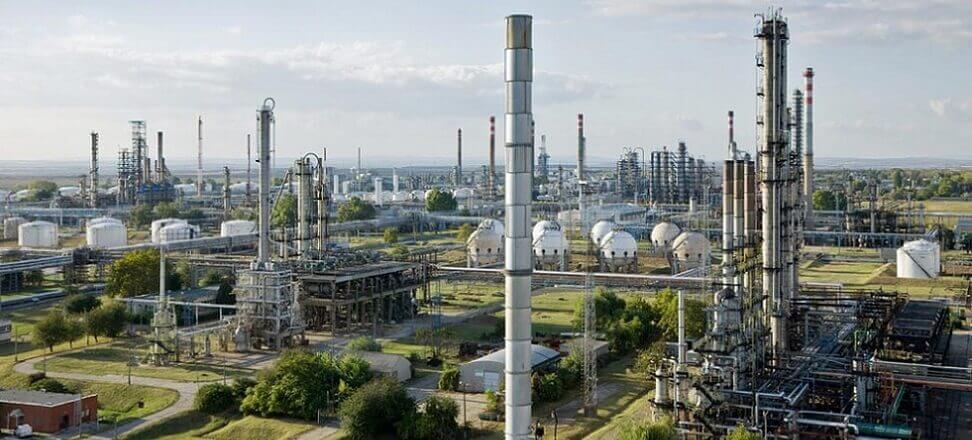The statement Water is the coal of the future, which was made in 1874. in Jules Verne’s novel The Mysterious Island, seemed irrational until recently. Hydrogen is now poised to become the world’s main energy fuel in the coming years. The hydrogen-related buoyancy, meanwhile, is translating into new hydrogen power plants popping up like mushrooms in Europe. Just in the past few days, two more have been launched in Hungary and Austria.
Hydrogen power plants are the basis for Europe’s sustainable development
Green hydrogen is a resource that is the future of European energy and transportation free of greenhouse gas emissions that contribute to climate change. It is produced by electrolysis, which uses only energy from renewable sources. Green hydrogen is able to effectively replace coal, oil and natural gas, as it has a calorific value of 33.3 [kWh/kg]. In addition, its combustion by hydrogen power plants or vehicles generates no pollution. The byproduct of this process is only water.
The potential of hydrogen has long been recognized by the EU. For example, in July 2020. The EC, in a bid to accelerate the development of green hydrogen in member countries and to ensure that its role is important in achieving a climate-neutral Europe by 2050, proposed a hydrogen strategy for a climate-neutral Europe. In 2023. In turn, the Parliament and the EU Council have agreed on mandatory national targets for infrastructure deployment. According to them, by 2031, hydrogen refueling stations are to be distributed on the EU’s main roads at least every 200 kilometers.
Additional steps toward the hydrogenization of Europe also include the EC’s planned €6.9 billion for IPCEI’s Hy2Infra project, which we wrote more about in the 5/2024 issue of Water Matters. Green hydrogen and its resulting benefits are also being noticed by companies, both private and public utilities. This is evidenced by the recently launched hydrogen power plants.
MOL has launched the largest hydrogen power plant in Central and Eastern Europe in Hungary
MOL Group, which is a Hungarian oil and gas processing company, is well aware that hydrogen is the fuel of the future. That’s why it has put into operation in Százhalombatta (in Hungary) one of the largest green hydrogen plants in Europe and the largest in the Central and Eastern European region, with a total capacity of 10 MW. The cost of this investment was 22 million euros, with the benefits it is capable of bringing are invaluable.
The Százhalombatta hydrogen power plant will be able to produce 1,600 t per year. pure green hydrogen. Instead, its main task is to support the Hungarian oil and gas company’s refinery operations. The hydrogen produced by the plants is expected to gradually replace the natural gas previously used in the fuel production process. As a result, the company will be able to reduce the carbon dioxide emissions generated by the Danube refinery by 25,000. t. annually. This value is much better illustrated in the words of MOL Group CEO József Molnár: we manage to reduce carbon dioxide emissions to a degree comparable to removing some 5,500 vehicles from traffic overnight.
The investment in Százhalombatta is one of the activities in line with the MOL Group’s Shape Tomorrow corporate strategy. It is also to include more hydrogen power plants, at the other two refineries, to achieve a more sustainable fuel production process.
Vienna also bets on green hydrogen
The second hydrogen power plant recently launched in Europe is the first of its kind in Vienna. It is located in the Simmering district on the premises of gas and electricity distributor Wiener Netze, which, together with the city’s electricity and district heating company Wien Energie and transport company Wiener Linien, is responsible for its operation. All of these companies are owned by Austria’s largest utility, Wiener Stadtwerke.
The construction and commissioning of a hydrogen power plant in Vienna amounted to 110 million euros. The plant is capable of producing up to 1.3 t. green hydrogen per day, which will be used both for the companies’ own use and made available to private transport operators. It will mainly find use in refueling buses and trucks, using a hydrogen station opened near the power plant.
It is possible that in the future the hydrogen power plant opened in the Simmering district will also provide power for the Donaustadt district heating and CHP plant. All thanks to the fact that Wien Energie has been conducting tests since last July to make it possible to mix hydrogen with natural gas, and then use such a mixture in steam and gas turbines to generate heat and electricity.
The hydrogen power plants put into operation in Austria and Hungary, although they have quite different purposes, are excellent proof that green hydrogen has great potential not only ecologically, but also economically. Consequently, further investments in hydrogen power plants in Europe are only a matter of time.
pic. main: molgroup

 Polski
Polski






